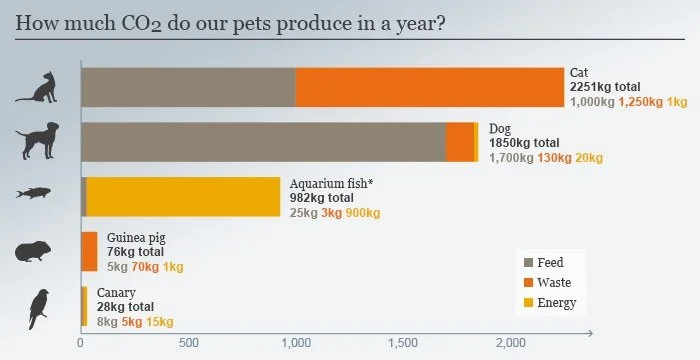Edible Insects: A solution to climate change?
As wildfires burn out of control worldwide this summer and powerful flooding has affected millions, the reality of climate change is becoming ever more apparent. In August 2021, the UN released a stark climate change report with a serious bottom line: either we aggressively commit to bringing down our carbon emissions to lower global temperatures or face perilous consequences.
Our planet is home to an estimated 7.2 billion humans and 1.3 billion pets, including 800 million cats and dogs. The United States counts 200 million family pets, as of 2021.
These populations are driving a dramatic rise in global meat consumption and demand, especially within developing countries where disposable incomes are increasing.
By 2050, we can expect to see more than 9 billion humans and over 2 billion pets, resulting in an estimated 110% increase in demand for agricultural production. This demand would require clearing an additional 1,482 million acres just for agriculture — to put that in perspective, that’s twice the area of India.
Currently, over two-thirds of the world’s arable land (77%) is used to produce the food required to feed the livestock which we farm; however, that land only yields 38% of the world's protein. It could be considered a poor value in return for the number of resources needed to produce it. To farm cattle, you need vast amounts of space, food and water. Right now, 30% of the world’s water supply goes to farming livestock. When natural grass pastures are not available then the cows rely on feed derived from soy and corn which is also grown unsustainably. Even now, this level of intensive agricultural farming has become unsustainable!
https://academic.oup.com/af/article/9/1/69/5173494
The emissions produced by bovines and cows alone are a leading contributor to global warming!
Source: doi.org/10.1093/af/vfy034 | Livestock emissions by source (adapted from Gerber et al., 2013). Direct livestock emissions are shown in red.
The UN has urged us to seek out sustainable protein alternatives.
http://www.fao.org/3/i3253e/i3253e.pdf
This intensive farming model used to create new grazing pastures and crop fields has resulted in mass deforestation of our rainforests, destroying important, diverse habitats and ecosystems in the process. By stripping the land of all its nutrients and forcing it to grow fashionable non-native crops with heavy use of genetically modified chemical antibiotic fertilisers and herbicides (Glyphosates) humans and the pets they feed are directly responsible for soil degradation, not to mention the poisoning of water systems and the leading cause of our oceans “Dead Zones” from nitrogen deposits.
How Does the Pet Industry Contribute to Global Warming?
Source: ClimatePartner/utopia.de | *100 fish in a 500-liter aquarium
A growing population of humans and pets rely on limited environmental resources.
The increasing demand for meat and animal-based products leads to a range of environmental consequences.
The hidden contribution of our omnivorous and carnivorous pet’s diets have on the environment
Food for thought...
Over 62% of US households have pets and most feed them a diet of animal protein; however, this figure is rarely included when calculating the environmental impact of dietary choices.
If American pets were a stand-alone country, they would rank in the top 6 for global meat consumption.
Considering that the majority of treats in the market contain some form of processed animal protein (PAP) — likely animal by-products — then shouldn’t we add our carnivorous pets into the environmental calculation of our food choices?
Studies from The National Center for Biotechnology Information (NCBI) suggest that:
“Dogs and cats consume roughly about 19% of the amount of dietary energy that humans do. They produce about 30% of the faeces as humans, and through their diet, constitute about 25–30%
of the environmental impacts from animal production in terms of the use of land, water, fossil
fuel, phosphate, and biocides”.
NCBI also estimates that the average full-sized dog requires around 2-3 kg (4.5-7 lbs.) of food per week. Dog and cat consumption of animal-based products is believed to be responsible for the release of up to 64 million tons of methane and nitrous oxide, two powerful greenhouse gasses.


